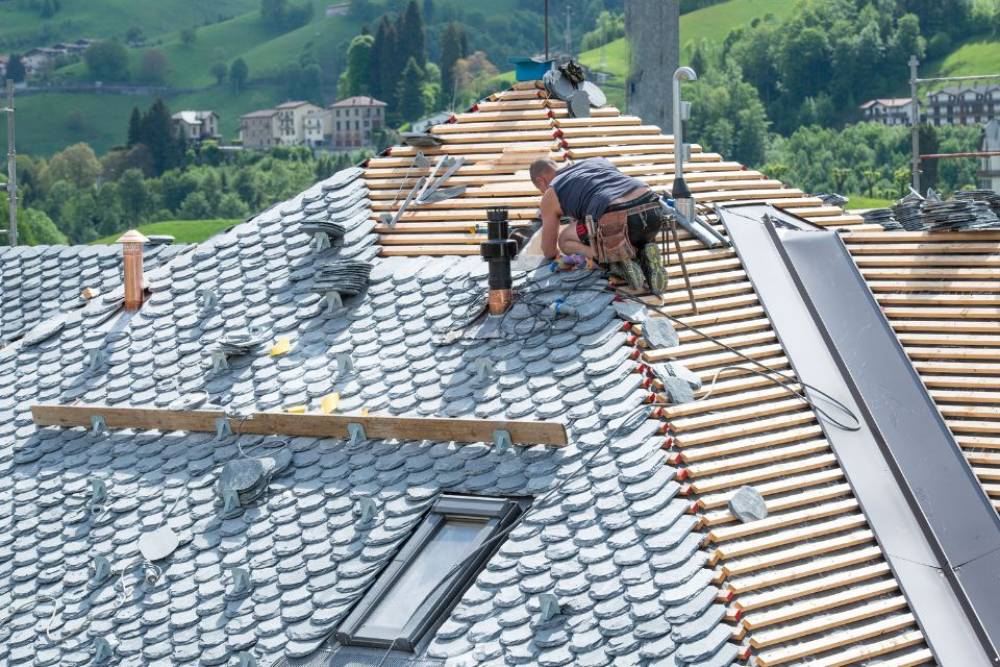
How TPO-Style Commercial Roofing Contributes To Energy Efficiency
Thermoplastic Polyolefin (TPO) roofing has gained significant popularity in commercial roofing due to its durability, cost-effectiveness, and environmental benefits. TPO-style roofs offer a unique combination of reflective properties, thermal insulation, and sustainability that contribute to energy efficiency in modern commercial buildings. Businesses today are increasingly looking for roofing systems that help lower energy consumption, reduce operating costs, and meet environmental standards. TPO roofing meets these needs by providing a system that reflects sunlight, reduces heat absorption, and enhances overall building performance. We will explore how TPO-style commercial roofing significantly improves energy efficiency technological benefits, and contributes to a sustainable future.
Reflective Properties Reduce Energy Consumption
One primary feature that makes TPO roofing energy efficient is its highly reflective surface. TPO membranes are typically white or light-colored, allowing them to reflect a significant portion of the sun's ultraviolet (UV) rays. This reflectivity prevents heat absorption, reducing the overall temperature of the building's roof and interior spaces. As a result, commercial buildings experience lower demand for air conditioning during hot summer months, reducing energy consumption and costs. Unlike darker roofing materials that absorb sunlight and trap heat, TPO roofs maintain a cooler surface, providing a more comfortable indoor environment. Reflective roofing materials have been proven to lower rooftop temperatures by 50 degrees Fahrenheit, translating into tangible energy savings for businesses. By minimizing the urban heat island effect—where urban areas experience elevated temperatures due to excessive heat absorption—TPO roofing systems play a vital role in mitigating climate change and promoting energy efficiency.
Thermal Insulation Enhances Building Performance
In addition to its reflective properties, TPO-style commercial roofing installation by Hurst office offers excellent thermal insulation, improving energy efficiency. TPO membranes are typically installed with layers of rigid insulation boards, which help regulate indoor temperatures by minimizing heat transfer between the building interior and the external environment. This insulation prevents the loss of heated air during winter and reduces heat gain during summer, ensuring a stable and comfortable indoor climate. As energy efficiency becomes a top priority for businesses, effective insulation systems are crucial in year-round lowering heating and cooling costs. TPO roofing systems can be customized to include additional insulation layers to meet specific energy performance goals, making them versatile solutions for various building types. By reducing reliance on HVAC systems, TPO roofs save energy and extend the lifespan of heating and cooling equipment, leading to long-term cost savings. This combination of insulation and energy regulation positions TPO roofing as a critical component of energy-efficient commercial buildings.
Durability Reduces Maintenance and Long-Term Energy Costs
TPO roofing systems are known for their durability, which indirectly contributes to energy efficiency by minimizing maintenance and repair needs. TPO membranes are resistant to common issues such as punctures, tears, and UV damage, ensuring that the roofing system maintains energy-efficient performance throughout its lifespan. A well-maintained roof prevents air leaks, water infiltration, and structural issues that could compromise insulation and energy regulation. Businesses benefit from lower maintenance costs, reduced energy waste, and improved building efficiency. TPO membranes also resist mold, dirt accumulation, and debris buildup, maintaining their reflective properties over time. This low-maintenance nature makes TPO roofing a cost-effective solution for businesses investing in energy-efficient building systems without frequent repair expenses. Additionally, the longevity of TPO roofing—often lasting 20-30 years—reduces the need for frequent replacements, conserving energy and resources that would otherwise be required for manufacturing and installation processes.
Environmental Benefits Promote Sustainability
TPO-style roofing systems contribute to energy efficiency while also aligning with sustainability goals. TPO membranes are manufactured using environmentally friendly materials free from harmful chemicals such as chlorine, making them safer for commercial applications. Additionally, TPO roofing systems are 100% recyclable at the end of their lifespan, reducing landfill waste and promoting circularity within the construction industry. By investing in TPO roofing, businesses can reduce their environmental impact and meet green building certifications such as LEED (Leadership in Energy and Environmental Design), emphasizing energy efficiency and sustainable practices. TPO roofing’s ability to reflect solar heat and reduce energy consumption also decreases greenhouse gas emissions associated with power generation. As governments and organizations implement stricter energy standards and environmental regulations, TPO roofing presents a viable solution for businesses seeking to comply with these mandates while improving building efficiency. Its combination of sustainability and energy performance makes TPO roofing an integral part of modern energy-efficient construction practices.
TPO-style commercial roofing enhances energy efficiency by combining reflective properties, thermal insulation, durability, and environmental sustainability. Its ability to reflect sunlight, regulate indoor temperatures, and reduce energy consumption makes it an ideal roofing solution for modern commercial buildings. By lowering operating costs, extending the lifespan of HVAC systems, and contributing to green building standards, TPO roofing offers long-term benefits that align with financial and environmental goals. Businesses looking to improve energy efficiency and sustainability can rely on TPO roofing to meet their performance needs while reducing their environmental impact. As the demand for energy-efficient construction practices continues to grow, TPO roofing stands out as a practical, cost-effective, and environmentally friendly solution for commercial buildings. Through its unique features, TPO roofing contributes to a more sustainable future while providing businesses with significant energy savings and enhanced building performance.

